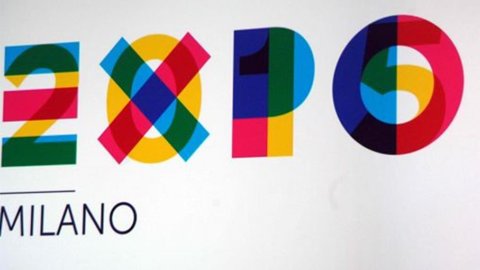There are exactly 30 days left before the inauguration of Expo 2015 in Milan dedicated to the theme "Feeding the Planet, Energy for Life" (May 1st – October 31st). As many as 53 countries are completing their pavilions; the others, just under 100, will be hosted in the 9 thematic clusters which we will discuss in one of the next episodes.
We recall that last February 19 we outlined the general profile of this extraordinary event. On March 6 with Enel and FCA-CHN, on March 11 with Intesa Sanpaolo and on March 16 with Tim, Finmeccanica and Samsung we presented the contributions, essential to the success of the event, which the eight official global partners of Expo 2015 are offering. On 21 March we illustrated the conspicuous Chinese presence: in addition to the official pavilion, China, in fact, also participates in the Expo with three Corporate spaces.
In addition to the official global partners, Corporate Participants are also present at Expo 2015. Companies, associations, institutions, which have signed a Participation Contract with Expo 2015 SpA in order to be able to build, set up, manage and dismantle their own Pavilion, enhancing one or more aspects of the Expo Milano 2015 theme. They have chosen to use the Universal Exhibition as a stage (in addition to the three who come from the land of the dragon, China Corporate United Pavilion, Vanke e JooMoo) Federalimentare, Kip International School, New Holland Agriculture, and Coca Cola.
The Corporate Pavilion of Federalimentare, designed by the studio of Di Gregorio e Associati, aims to be an epicenter to disseminate and enhance the image of the Italian food industry and its best brands and contribute to the key themes of the Expo: healthy and quality food, environmental sustainability and development social. Designed in partnership with Fiere di Parma, it intends to represent a complete showcase of Italian food products of excellence, arranged according to a path divided into product chains, to provide foreign buyers and visitors with an exhaustive overview of made in Italy food.
The project envisages the involvement of thematic museums and company historical archives which make their contents available. The internal scenography is created with organic macro architectures, which will divide the space, creating the visitor itineraries. On the external facades, a program of live performances will take place, curated by the artistic director Felice Limosani (he has signed works exhibited, among others, at the Louvre, Triennale di Milano and White Chapel Gallery). International artists of graffiti art will create site specific works on the theme of food, nutrition and conviviality. At the end of Expo Milano 2015, all the works will be exhibited simultaneously in a group exhibition of street art on the occasion of CIBUS Parma 2016.
The Corporate Pavilion of Coca-Cola, designed by the architect Giampiero Peia, together with the brand experience agency Ps Live, will be the setting in which the Company will experientially tell its model of sustainability, based on the promotion of active lifestyles and a balanced diet, product and packaging innovation and environmental protection. The Pavilion is located near the Italian Pavilion and Lake Arena. The building, a 12-metre-high parallelepiped with a total area of 1000 square metres, is entirely made with eco-sustainable materials: wood, glass and water. The external side walls, in glass and wood, reproduce the Coca-Cola logo and the silhouette of Contour, the historic glass bottle of Coca Cola, which in 2015 will celebrate its 100th anniversary.
The entrance and exit of the pavilion are characterized by waterfalls to allow natural ventilation, they have no doors and closures. Even the roof of the pavilion respects the standards of sustainability: planted with vegetation suitable for the climate of Milan, with reduced irrigation and no need for maintenance, it guarantees the reduction of overheating of the internal environments, reducing the use of energy required for cooling.
Visitors to the Pavilion will be guided on a journey that will lead them to discover the Coca-Cola world as an active protagonist, through a journey that recounts the Company's values in three sections: Local presence, Energy balance, Sustainability. A second life awaits the Pavilion at the end of Expo. Recyclable, reusable, already conceived with the width of a basketball court, at the end of the exhibition the Pavilion will be rebuilt to become a covered space, for the benefit of the local community, where you can practice physical activity.
“Respecting the earth to cultivate the future” is the title of the New pavilion Holland Agriculture, a global leader in agricultural equipment, part of the FCA group. The concept of the pavilion is inspired by the Clean Energy Leader strategy that New Holland has been pursuing since 2006 and in particular by the Energy Independent Farm project presented and awarded in 2009 at the SIMA (International Exhibition of Suppliers to the Agricultural and Livestock Sector) in Paris, based energy self-sufficiency of farms thanks to the enhancement of their bioenergy sources.
RecchiEngineering, Italian leader in the field of Project and Construction Management, leader of a multidisciplinary project team made up of the Carlo Ratti Associati studio (author of the concept), NÜSSLI Italia, Manens-Tifs, Studio Durbano, has been designated as the creative agency for the pavilion at the end of a competitive European tender. Thanks to the structure and various interactive tools, video installations, augmented reality and an exhibition of tractors and harvesting machines, visitors will be able to learn and experience how New Holland promotes the importance of agricultural sustainability.
And here we are at the last of the Corporate pavilions. In reality we are not dealing with a company or a business association, but with a school, albeit a very particular one. There KIP International School (Knowledge, Innovations, Policies and Territorial Practices for the United Nations Millennium Platform) is an independent non-profit organization that collaborates with national, regional and local governments, international organizations, universities, foundations and other public and private organizations, to promote knowledge, innovations, policies, territorial practices, research and training activities consistent with the objectives and values of the United Nations Millennium Platform.
"Attractive territories for a sustainable world" is the title of the Pavilion. To feed the planet, governments, businesses and associations must first invest in local development, giving the right value to the area, where people live and work together and can produce the healthy food they need. But for people to choose to live there, the territories must be attractive: for the vivacity of the economic circuits, the good quality of the services, the naturalistic beauties, the culture, the history and above all for the possibility of participating in the development decisions, ensured by the proper functioning of governments and local institutions.
In the pavilion it will be possible to meet actors who are already committed to realizing quality development and who will present their experiences to visitors. Great attention is paid to China, which in the KIP Pavilion will show a hitherto little-known face: that of the great creativity and social sensitivity of its public, associative and private actors. Above all, the players who intend to build together development programs and international partnerships that will continue even after the end of the Universal Exposition will meet in the Pavilion.
Among other things, meetings of some large international networks are planned: that of the territories involved in organic and sustainable development, through territorial agreements between producers, local governments, health services, schools, universities and tour operators ; that of the 60 Local Economic Development Agencies, active in 25 countries around the world, which show how poverty and exclusion can be successfully fought by pursuing a type of economic growth capable of enhancing local resources and producing widespread well-being; the network of international development cooperation experiences that are overcoming the old aid schemes and creating North-South exchanges and partnerships, based on mutual interest, respect for cultures and diversity and the active involvement of people; the network of cities against poverty born at the 2014 World Urban Forum.





